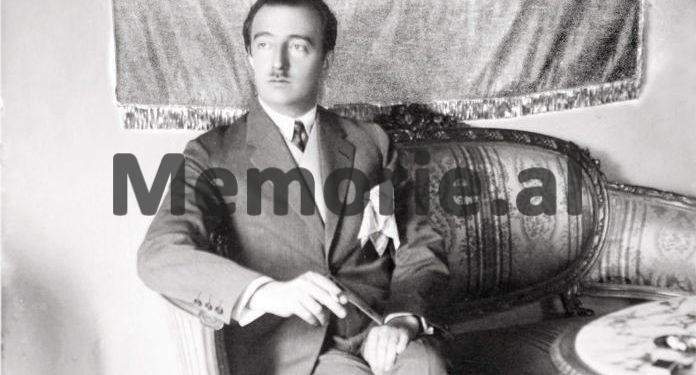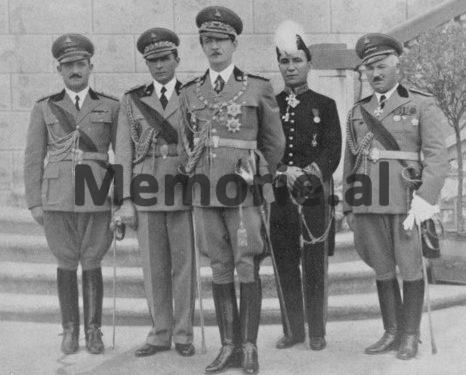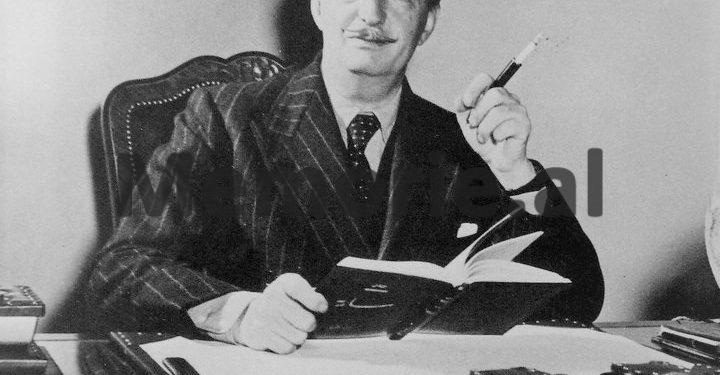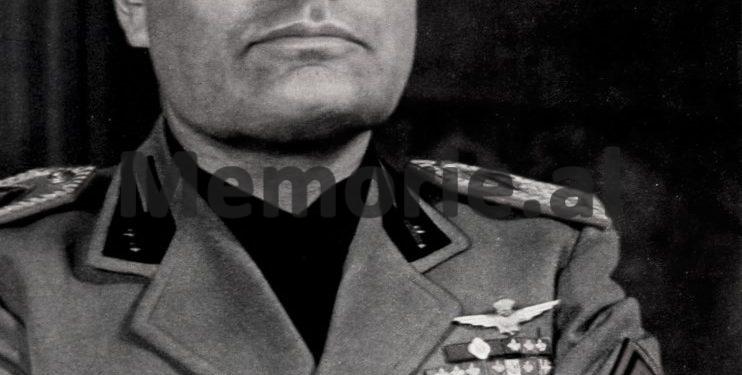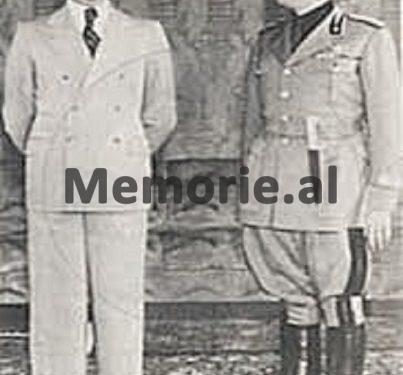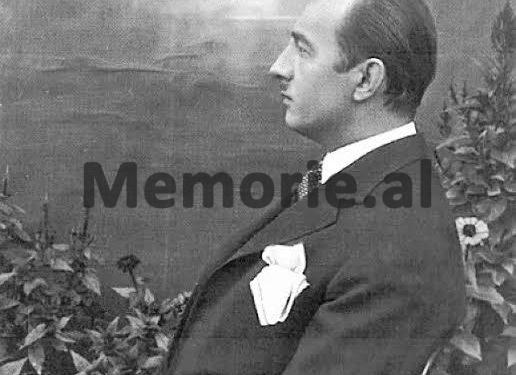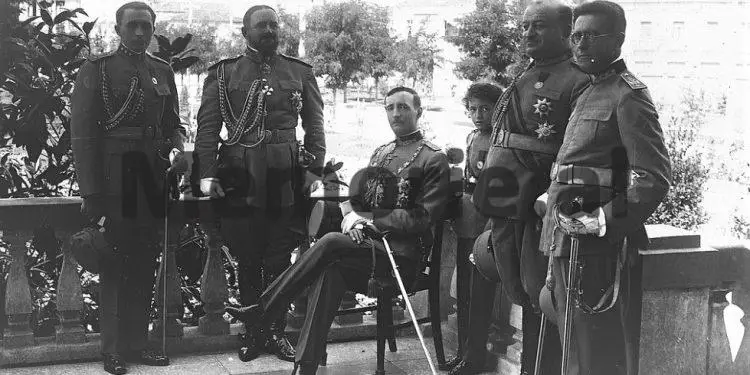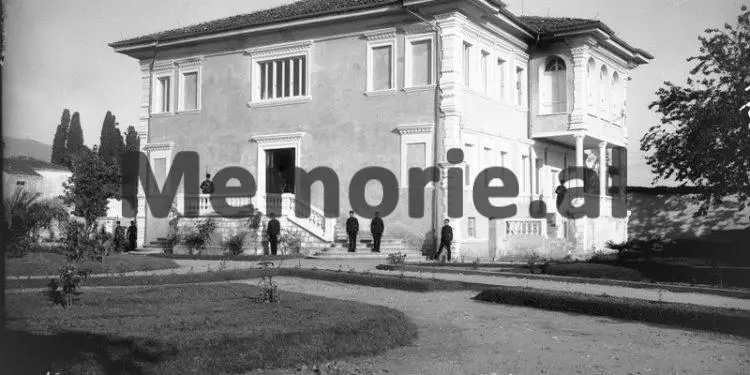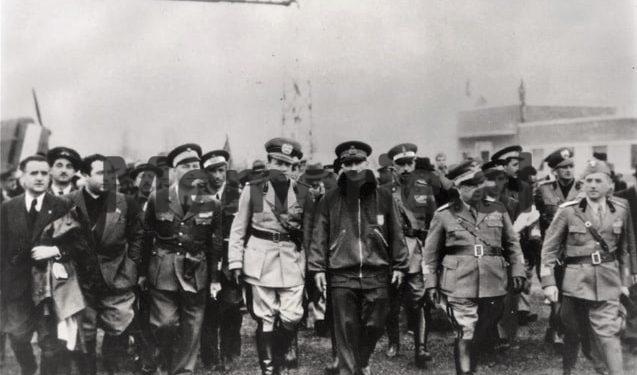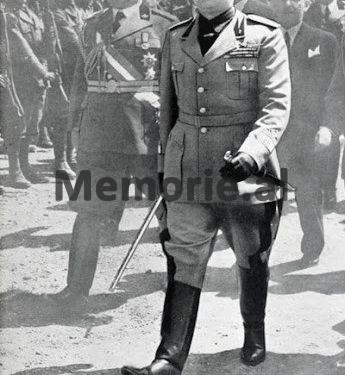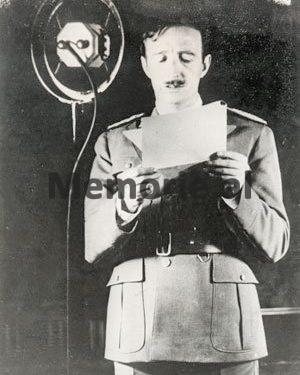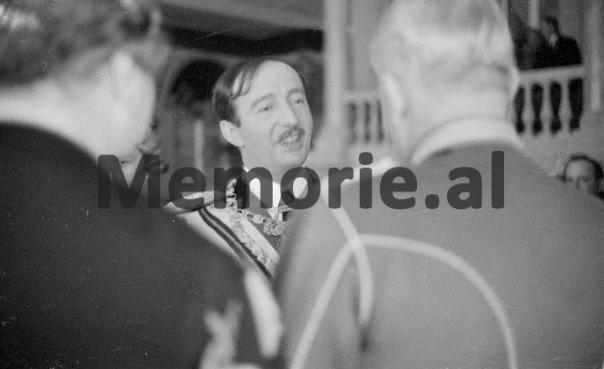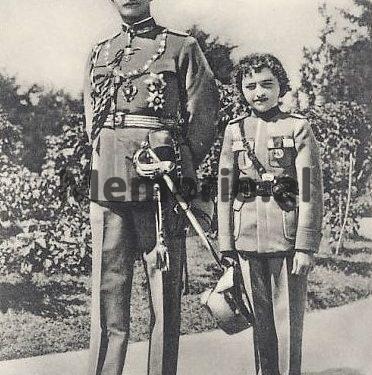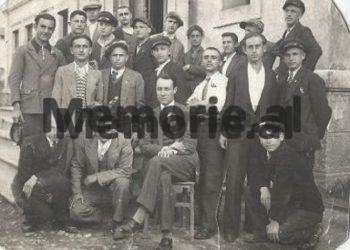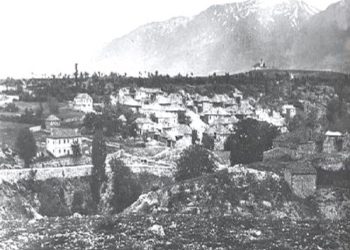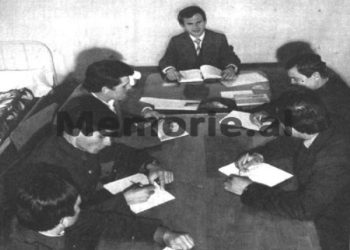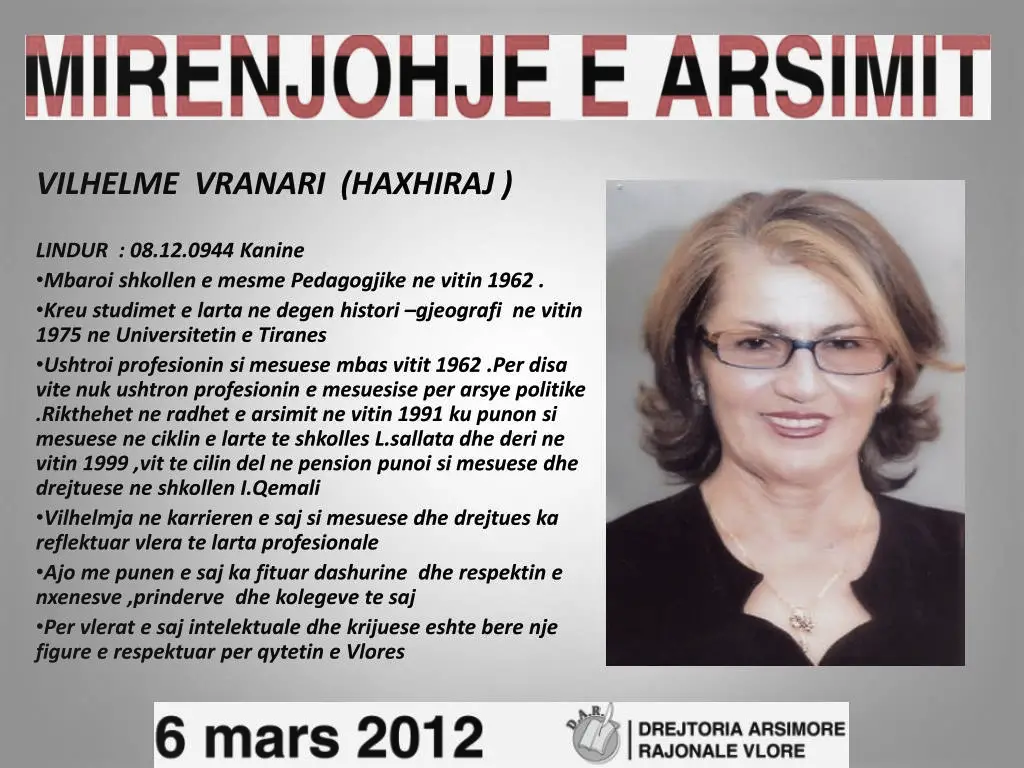Dashnor Kaloçi
The first part
Memorie.al publishes the unknown story of King Zog’s relations with the fascist Italy of Benito Mussolini, who since his coming to power in the mid-20s and throughout the period of the Monarchy, tried by all means to seduce him The King of the Albanians, to carry out their intentions that the small Balkan country be under their influence. The whole almost 15-year history of King Zog’s relations with Benito Muslin, etc., from the point of view of the well-known scholar Bernd Fischer, who has long dwelled on Albanian-Italian relations, as well as the memoirs of Count Çano, etc., which are clearly reflected Italy’s attempts and plans to have Zog and Albania under their control, but after failing, they tried three times to physically eliminate him and after failing there as well, they finally undertook the military aggression of April 7, ’39!
Although the Italians had a hand and were implicated in two plots for the overthrow of King Zog, the Vlora Movement of 1932 and the Fier Uprising of 1935, as well as his physical elimination from the end of 1938 and the beginning of In 1939, they did not give up their plans and intentions to bring Albania under the Italian framework. After several attempts failed, finally in March 1939, the Italian Foreign Minister Conti Ciano (who was one of the initiators of the occupation) persuaded the Prime Minister Benito Mussolini (Duçja) to intervene militarily in Albania. But why did the Italians want to physically eliminate Ahmet Zogu, what were the attempts they made to realize their plans and goals and how did they fail in all cases trying to do so. Regarding these events that inevitably led the Italians to the fascist aggression against Albania on April 7, 1939, has been shed light by many foreign scholars and historians, who in addition to using many Italian and Albanian archival documents, have also used the memories of some from the main actors of these events, such as the diary entries of Count Ciano, or those of several ambassadors and consuls of various European countries, who at that time were attached as Plenipotentiary Ministers in Albania. One of these historians who has taken seriously the Italian-Albanian relations and has done a voluminous work in this direction, is the historian Bernd J. Fisher, who in a voluminous book, (King Zog and the efforts for stability in Albania. Botimet Çabej , 2004), has stopped extensively analyzing in detail all the events and Albanian-Italian relations, from 1922, when Benito Mussolini came to power, until April 7, 1939, to complete them with the capitulation of fascist Italy and the departure from Albania in September-October 1943.
The intentions of the Italians for Albania
In 1920, after failing in their attempts to retain Vlora and being badly broken by Albanian volunteers in what is known as the Vlora War, since Mussolini came to power in 1922, the Italians began to think again about how to to extend their influence to the small Balkan country, which was at the same time the target of its aims and its neighbors both from the North and from the South. In this regard, in his book, Fischer writes: “Zogu thought that he could take the money from the Italians, strengthen the Albanian economy that would serve to strengthen unity, and yet through tricks, deny them that kind of control. Political they longed to establish in Albania. And here he was not entirely unsuccessful; he took the money and maintained control over the state. However, Zogu was a nationalist and refused to give in completely too Italian pressure. Mussolini tried with increasing threats and bribes, but Zog remained steadfast. Ironically, Zog’s refusal to hand over Albania’s political independence convinced the Italians that the only way left for true domination of the country was direct occupation. The task of destroying this independence was left to Count Galeziano Ciano, the new Italian Minister of Foreign Affairs. To achieve his goals of invading Albania, Count Ciano decided to make his first trip to Albania, which he made in April 1937. Trying to imitate Mussolini, Ciano arrived in Tirana on a plane that led him and with him were a large number of officials of the Italian Ministry of Foreign Affairs. On that first visit to Albania, Ciano held a series of meetings with Zog and visited many towns and villages, from where they began to take concrete shape of his plans for the invasion of Albania. Regarding this visit, in his notes Konti Ciano writes: ‘My visit to Tirana convinced me that we should take great care of this front sector. Here we must create sustainable centers of Italian influence. Who knows what the future holds for us. We must be ready to seize the opportunity when it comes to us. ‘After these words in his notes, Count Ciano added: “This time we will not retreat like we did in 1920.”
Attempt to kidnap Zog!
The plans of the Italians for the realization of their goals in Albania, encountered an insurmountable obstacle, which was King Zog. To overcome this obstacle, Count Ciano began to draw up a series of plans through his men, especially Francesco Giacomoni (the powerful Italian representative in Albania) and Giovani Giros, one of the senior officials of the Italian Fascist Party who had come in Albania to work with the youth, running the “Dopolavoro” centers. Around 1938, in a report sent to Mussolini, Ciano informed him that he had taken control of a good part of the local elements. He added in that report, that public opinion was increasingly inflated against Zog and in a case of unrest, the intervention of the Italians would not encounter any resistance. Ciano’s first attempt at the physical elimination of King Zog dates back to the end of December 1938. In that attempt, he aimed to kidnap Zog, along with all of Queen Gerland. Early in December of that year, the royal couple, Zogu and Gerlandina, accompanied by the Foreign Minister and several other senior officials, set out on a yacht cruise. The bird had promised Gerlandina a short honeymoon and felt very safe to leave the country for a short time. He decided to sail to Venice and for this, had asked Count Ciano a ship that would make his tourist trip possible. To carry out his plan to kidnap the King, Count Ciano decided to send him a ship with an Italian crew, in order to avoid Zog’s escape in any case. As soon as they left the port, Gerlandina, who was in the fourth month of her pregnancy, fell ill due to the bad weather and the doctor who served next to her, insisted that the ship return immediately to Durrës. In this regard, in some interviews that Gerlandina has given there since the beginning of the ’80s, she said: “Immediately when the decision was made to return the ship to Durres, a lot of noise was heard from the deck and the situation became so tense how much Zog was greatly disturbed. “According to Gerlandina’s testimonies, which he learned through the people of the Royal Court, it is said that the Italians on that trip, had intended to kidnap King Zog, or otherwise to kill him.
The second attempt to poison Zog!
According to the historian Fischer, although there is not much evidence to prove Gerlandina’s evidence, it is very clear that Ciano and Jacomoni then prepared another detailed plan, for the poisoning of King Zog. For the existence of this plan that would be realized by Jak Koçi, who was one of the most trusted and confident people of Zog, there are many other testimonies from people who at that time served near the Royal Court at that time. According to these testimonies, Jak Koçi, Zog’s close man, who met Ciano in person, had agreed to take over the plan to poison the King, after he had been promised ten million Italian lire. According to that plan, Jak Koçi would poison the King, throwing the poison in his coffee and after that the riots would start. In order to neutralize the military actions of the government forces, a large number of Albanian workers who had been previously recruited by being paid large sums, who were then working in an Italian company that was dealing with the regulation of the national road Tirana-Durrës, would be used. -Plepa. According to these evidences, it is said that the plan for poisoning King Zog, came after Captain Selim Kaloshi, to whom a large amount of lire was paid (almost as much as that of Jak Koçi), went to Zogu and told him the whole plan that was made for his poisoning. After that, the King called Jak Koçi to his room and when the maid put the coffee on the table, Zogu told him to drink the coffee without worrying that there was no poison. Jaku was stunned by the King’s words and realized that he had been betrayed in his plan. Zogu, given the services that Koçi had once rendered to him, did not want to arrest him, but told him to leave the palace immediately and leave Albania forever, until the Minister of Interior, Musa Juka, found out about it. Although after the war, Jakomoni testified in the High Court of Justice, that at this point Ciano had given up the idea of assassinating King Zog, Gerlandina in her interviews, proves that two assassinations were prepared against Zog’s life at that time others, which she insists were inspired by the Italians. One of the failed attempts to assassinate the King, who is suspected to have had the finger of one of the Courtiers, is that of January 1939, when on one of the roofs of buildings at the edge of the garden behind the Royal Palace, a rifle.
King Zog unmasks the plot!
After these attempts to physically eliminate King Zog, he publicly declared the failure of those plots that had aimed at his elimination and the overthrow of the government. After that, Giovani Giro, who was accused of being the inventor of those plots, was announced to leave Albania, as a persona non grata. Although Giro’s main role was to organize the fascist youth program, he had openly displayed his hostility to King Zog. But the greatest sin that Zog knew of Giros was his connection with some anti-Zog Albanian emigrants in Paris, including Zog’s earlier opponent, Mustafa Merlika Kruja, who with the help of the Italians, in 1922, had tried to overthrow the Albanian government of which Zogu was a part. Based on these, Zogu ordered Musa Juka to destroy all pro-Italian groups organized by Giovani Giro. One of the people considered to be Giro’s most loyal man was the pro-fascist journalist Vasil Alarupi, who was arrested and held in solitary confinement in Durrës. In addition to him, several other Albanians were arrested who were accused of being close collaborators in the plans of the Italians. After this, Zog sent words to the northern bayraktars who were loyal to him and mobilized the reservists, which forced Jakomon to call on Zog not to interfere in the Italian plans. During this period, King Zog was alarmed and very shocked, as he was noticing that his relations with the Italians were deteriorating day by day. Rome continued to sabotage it and control all financial loans it granted directly to Albanians through Italian banks in Albania. Sensing and sensing the danger posed to him by the Italians, who had decided to act against him, Zogu thought of getting ahead of evil. He knew very well that if the Italians tried to physically eliminate him, they would definitely achieve the goal. Based on this, he came to the conclusion that: the only alternative he had left was to take good care of the Italians. Thus, in October 1938, Zogu sent a message to Ciano, stating that Albania was in the hands of Italy and that Italy controlled almost every sector of the country’s life. In addition, the news item read: “The king was pious and the people grateful.” According to him, what Zog was doing was nothing more than an attempt to gain time and give him the opportunity to enter into an agreement with other powers. King Zog’s chief, who told in confidence the British almighty in Albania, Ryan, that he intended to turn his eyes away from the Germans./Memorie.al
The next issue follows





